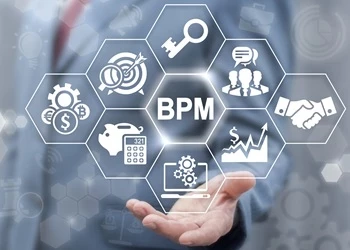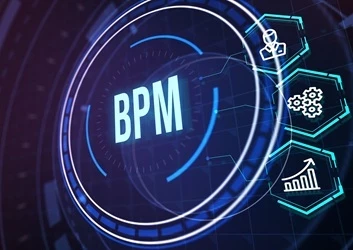AIG’s Art Drake on why growth in the insurance industry depends on creating a "unique customer experience"
Add bookmarkIn an Accenture survey published year, over 90% of insurers said then that they believed that future growth in their business depends on providing a special customer experience. But delivering differentiated products and customized services is easier said than done.
Enter big data, mobile technology and business process excellence.
In this PEX Network interview, Art Drake, Vice President – Transformation Management Office at AIG Benefit Solutions, discusses what’s driving the increasing focus on creating a unique customer experience in insurance and describes how process excellence and big data analytics can help.
Editor’s note: this is a transcript of a podcast from our archives. To listen to the original podcast, click here.
PEX Network: Do you agree that future growth in the insurance industry depends on the customer experience?
Art Drake: I would agree. I think what we’re seeing now is that people are really starting to pay more attention to customers because of the demographics. The customer base has huge shifts from a demographic standpoint. That means that what used to work for a group of customers yesterday is no longer true today.
A lot of our effort has to be spent on analyzing where are new customers coming from, age groups, generations, gender; all that information now is taken into consideration. There is a big push now to figure out how to package, present and position insurance products to a dynamically shifting customer base.
PEX Network: One thing I found interesting in that survey finding was that they believed that future growth depends on that, that it’s the phrase: providing a "special" customer experience. What does special customer experience mean within the context of your industry, do you think?
Art Drake: I’m not so sure I would use the word "special". I think it’s really that we get into a unique customer experience. If you think about insurance, at the end of the year people have to go through open enrolments and decide, from a benefit standpoint, what benefits they need or want. That becomes a unique experience for that participant when they’re in the process of selecting those insurance products.
That why, again, I would say it’s more of a unique customer experience versus a special customer experience, because a number of technologies that are in what we would call the enrolment space are really centered around an online experience that is unique to the person that’s answering questions on the screen. As I go through my enrolment process, for instance, I’m going to get help and assistance based upon who I am, my age, my selections, to a certain point. It’s unique to me and no two customer experiences are the same.
PEX Network: I imagine that technology plays a huge role to create that unique customer experience. We’re seeing customers increasingly have more and more sophisticated technology at their disposal such as our mobile phones. Which new technologies and trends do you think are going to have the biggest impact on financial service and insurance companies?
Art Drake: I might rephrase that and ask, which technology isn’t going to have an impact? For instance, up to this point, a lot of insurers and financial companies and institutions have been worrying about their web presence, so I’m going to sign into a web page, a portal; I’m going to be able to do things with my plan and all that activity.
One of the things that we have to be really cautious of is wrapping our applications so that they can actually run on any type of device and also take into consideration what social media is doing to that environment. We see examples of where even AIG is starting to appear on Facebook and some of these other social media areas.
It’s not that it’s a new conversation for some companies - especially in the financial services - but how does that evolve? How does my customer base connect with us through social media? With handheld phones and iPads and all the technologies that are coming out, social media is finding its way into those technologies already; we just have to follow suit. I think that if you have an insurer or a financial company institution that doesn’t follow suit, they’re going to miss out on large portions of potential customers.
PEX Network: What, practically, does that mean? What do insurance companies need to do then to respond to some of those changing customer habits?
Art Drake: A couple of things. First is, as financial services go, so does insurance. So what you’ve seen in the last three or four years, and even maybe a little bit before that, are huge analytic programs. Now when you look into the technology space, you hear the conversation around Big Data.
Data warehouse was interesting probably five years. But we’ve moved beyond that into all kinds of data, not just a customer’s transactions, but what the customer’s doing around that transaction.
So we are talking about and looking at how do we analyze more of what the customer’s trying to do and what they’re trying to achieve versus: here’s what we can offer. There are a lot of services now that actually go and provide a lot of demographic information, trends analysis around various age groups and generations, what’s coming, how do behaviors in social media translate into business transactions or business development.
These are all new points of data or new data-points for us to analyze or track down, see if we can’t figure out how to collect some more of that data.
I think in order to respond to customer needs, data plays a key role in trying to figure out how to respond. It may not be necessarily developing a new product, it may be more about: how do I get that product into the marketplace through different distribution channels? I think the other thing that we’re seeing is, in the insurance world you typically have a distribution channel, so work through brokers or agencies or what have you, and nowadays I think you’re seeing more of an interest by insurance companies to have more of a direct relationship with the customer, and not necessarily to not use brokers or intermediaries. I think you’re going to see more of that taking place over time, not less.
PEX Network: Where BPM and CRM fit into all of this?
Art Drake: CRM, obviously, has been around for a while. In the manufacturing role we had CRM and ERP and all these things, trying to figure out who or what. The lessons are still very relevant to the insurance industry. Ultimately, it’s about getting information and about really understanding the customers. It’s about understanding how the customer has interacted with us over the life-cycle of a customer, everything from advertising and building awareness in the marketplace, through to acquisition of a new customer or renewal of an existing one.
I think the CRM layer is now playing a larger role in the insurance space to help us capture more information around who our customers are. I’ll go back to my earlier comment: in our world the customer also includes the broker and the intermediaries that act on behalf of our customers. Again, it’s not just a matter of watching the insurers, we have to watch the folks that help them buy insurance or help them present insurance. So CRM is going to play a much larger role in collecting a lot of data and understanding trends with how we’re dealing with our customers and how we’re responding to customer needs.
BPM, on the other hand, allows us to really design services. If you think of an insurance product, you don’t get anything in a box, you’re buying trust. So, really, the value of an insurance product is delivered through its services. Customers only recognize that value when those services are delivered in a way that meets their needs.
Depending on who I am as a participant I may have to have a different experience to leverage a service based upon my need. What has to run in the background - what’s underneath all that - is using BPM to design the processes that need to be in place to allow us to repackage or re-orchestrate services to meet the changing needs of our customers.
BPM is just a fundamental building-block to building dynamic services for your customers. As your customer needs change, you can re-engineer your services, or re-architect your services. When you use BPM, you’re doing that based upon a sound foundation of how your company operates.
PEX Network: What are you up to at AIG?
Art Drake: We’re doing BPM from the perspectives of outside-in and inside-out. The outside-in view is: how do we want to be seen by our customers? We talk about web presence, handheld technologies or iPads and we have to wrap our application so they can run on these technologies.
That said, even if I have a portal or I can run our provided service via either a phone or a tablet, the requirement is still the same: when I as a user click on a button to submit a claim or make a payment or get information, I have to know that when I hit that submit button I’m actually going to get the information that I need and that my request is going to get handled.
In the background now we are going through and implementing more of a BPM architecture and using BPM to really define our process architecture so we can really start to line up processes with online services, to make sure that we understand the end-to-end impact of a service. More importantly, we want to start predicting the service levels that we can achieve.
If today, for instance, I have a very manual process, or as a user I have to mail something in and it takes three or four days or longer to process and I don’t get information back for seven to ten days, that is unacceptable to anybody that’s under the age of 20, let’s say. We’ve got to really pay attention to those service level requirements; I can’t improve them unless I’ve really got a very sound business process management capability within the business.
That said, we’re going through an exercise right now of: what services are we going to offer on the web? What services are we going to offer? And then we need to understand how those services map to back-end processes, and analyze those processes to make sure we can measure the end-to-end throughput or straight-through processing.
[inlinead]




















